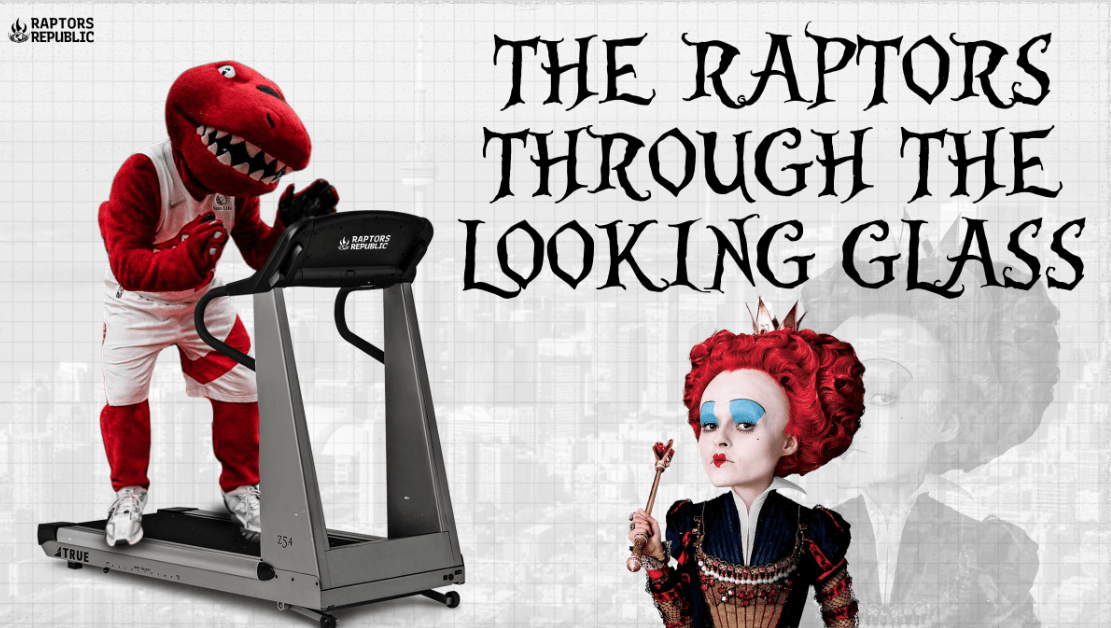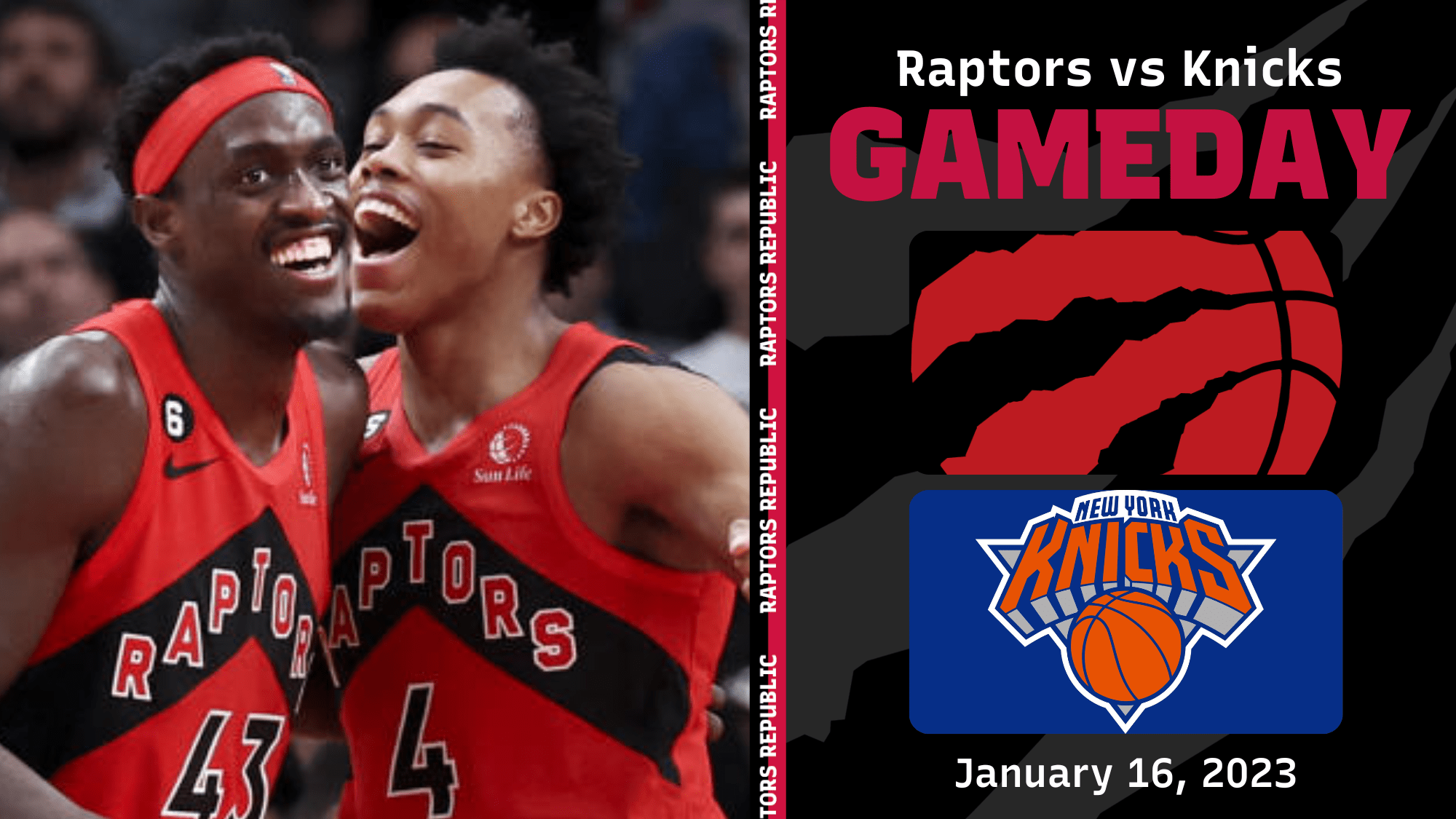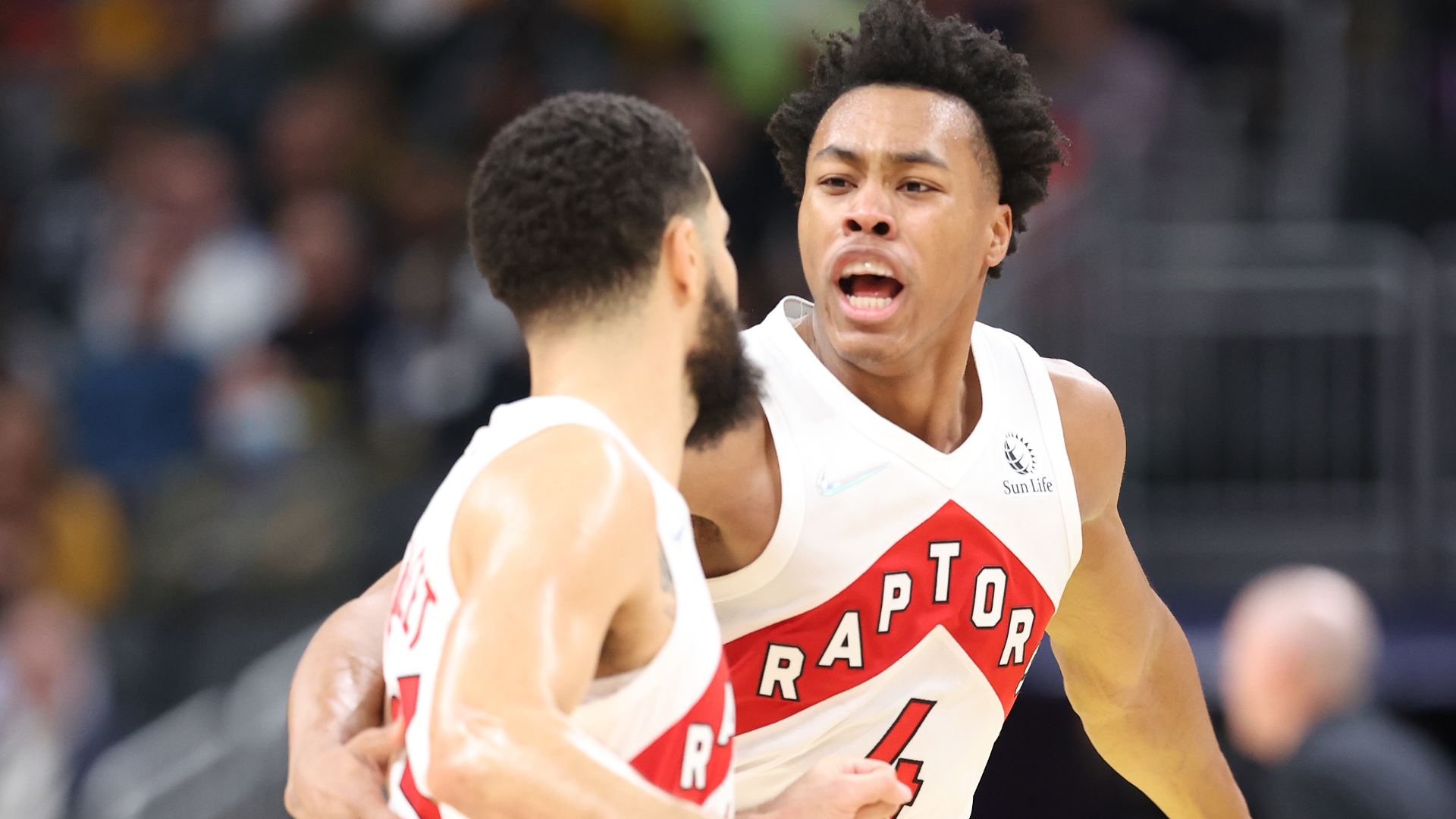‘Now, here, you see, it takes all the running you can do, to keep in the same place. If you want to get somewhere else, you must run at least twice as fast as that!’ The Red Queen
Introduction:
The Red Queen theory is derived from a quote in Lewis Carroll’s Through The Looking-Glass, and What Alice Found There.
It was adopted by evolutionary biologists to explain the need for organisms to constantly evolve and adapt. That need is even greater in highly-competitive environments. The quicker an organism can evolve and adapt in comparison to its rivals, the better it will be at creating advantages to gain the resources it needs for survival.
The theory can be applied to the business of NBA basketball, which has never been more competitive than it is today.
The State Of The NBA’s Eastern Conference:
Parity has changed the landscape of the NBA. Previously, the separation between contenders, competitors and others could best be described as triangular. Teams like the Cleveland Cavaliers and Golden State Warriors operated effectively as monopolies at the top. Their place at the NBA finals was almost assuredly guaranteed. Below them sat a handful of contenders and beyond that, the rest.
Since the departure of LeBron James, the playing field in the Eastern Conference has levelled. There is no clearly defined apex predator sitting at the top of the food chain. Instead, three or four contenders are competing for that role. Trying to put a stamp on the East as their own.
The barriers to entry between each competitive tier are now lower. The standings are in a constant state of flux.
Within this dynamic environment. The decisions of each team’s management have never been more pronounced than they are today.
The Boston Celtics went from tenth in the standings with a record of 16 wins and 19 losses on December 29th, 2021 to Eastern Conference champions, thanks to Brad Steven’s engineering three trades that brought in players to compliment their on-court product.
The Cleveland Cavaliers have weathered the loss of LeBron’s departure through the draft (notably Darius Garland and Evan Mobley), player development and acquiring players in trades (Jarrett Allen and Donovan Mitchell). They just need a play-off win to mark themselves as contenders.
Young teams like the New York Knicks and the Indiana Pacers have made leaps in the standings from last year.
According to @Knicksmuse a Knicks news outlet
‘The Knicks’ jump in the standings has been more than just the addition of Jalen Brunson, who has locked down a position that the Knicks have lacked consistency from for a decade. Brunson’s presence has allowed Julius Randle to regain his All-Star form. RJ Barrett continues to grow as a player. On top of this, the team’s development of draft picks Quentin Grimes, Immanuel Quickley, and Mitchell Robinson as elite complementary pieces have contributed to what many view as a legitimate play-off team in the East.’
The Pacers have emerged out of nowhere. The acquisition of Tyrese Haliburton and their recent draft crop of Canadian guards have changed the ceiling for the team. Caitlin Cooper of Indy Cornrows, one of the best basketball writers today, was kind enough to give her take on where the Pacers were last year and where they are now:
‘Shooting matters, it seems. Now, when you watch Indiana being aggressive in transition and attempting the highest frequency of early threes since the 2017-18 Houston Rockets, it seems like a lifetime ago that Chris Paul yelled out to his Suns’ teammates that the Pacers couldn’t f**king shoot so they should back up off them. Unfortunately, with barely anyone on the team shooting above 35 percent from deep prior to the trade deadline last season, Sabonis was all too often fighting off hordes of defenders, muting his ability to lubricate the offence, in the absence of credible release valves. As a team, they made 19 or more 3s in a grand total of three games last season. At the halfway mark of this season, they’ve already hit that benchmark in seven of 42, providing a powerful deodorant for what they give up on the glass and with size while playing the four-guard lineups that require lots of patchwork from Myles Turner and with traps on defence but so often allow them to outrun and outgun opponents.’
For a team like the Raptors who don’t have the luxury of a proven centre to provide the ‘patchwork’ and barely any players shooting above 35 percent from deep, the Pacers are just another example of how a focused front office can build upon the foundation and adjust personnel to fill in the gaps where a team is lacking.
State Of The Raptors:
For Toronto, things are at a standstill. The Raptors were the team of ideas, the team of a box-and-one zone. The organism that adapted and evolved faster than its competitors and by doing so gathered the assets to push them over the edge. The Raptors were the team that pioneered Basketball Beyond Borders to open up talent pools beyond the U.S. and Europe. The team that through its scouting process drafted Jakob Poetl and Pascal Siakam and signed Fred VanVleet in the same draft year. The team that built a league-envied player-development program. The team that created Vision six-nine, which, say what you want about it, was and is considered groundbreaking.
Yet here the Raptors stand, three years after the bubble with very little to show for development. Apart from Scottie Barnes, Toronto’s drafting has been mostly ineffectual in acquiring talent that has been effective at the NBA level. Koloko looks like a nice piece but he will not be at his full potential for at least a year or two. Development has been slowed by the loss of coaching talent to other organizations. Nick Nurse’s tight rotations have not allowed many minutes for player development.
Cap space restrictions have limited the front office’s ability to acquire the needed talent to fill the holes in the roster’s construction, cramping the ability of the coaching staff to fully implement the on-court vision.
Meanwhile, other teams have adapted Toronto’s ideas and innovations to their organizations. Offensive rebounds are booming across the league and zone defence is universal. Evolution happens rapidly when billions of dollars are on the line. Toronto is now no longer ahead of the curve.
From Masai Ujiri’s perspective, this may be a controlled stall, designed to sit through a period where the teams’ hands were tied due to cap space issues and no clear path forward and then to re-emerge from the cocoon into something more. But somewhere inside the casing, changes need to occur for the butterfly to emerge. We have seen very little evidence of this other than the acquisitions of Thad Young and Otto Porter jr. Players who are more suitable– when healthy — to complement an existing core rather than transform the team into something more.
Blake Murphy’s recent article for Sportsnet “How successful have the Raptor’s really been at finding value in signings.” goes much deeper into the subject.
Masai has always been known as a patient man who espouses short-term tactical transactions for long-term strategic choices. He took this team from the dredges of obscurity to a championship. Slowly but surely rebuilding all aspects of the team’s infrastructure while fielding a competitive regular season team and a solid young core in the bench mob.
But patience can also be a double-edged sword.
Patience is a fine attribute in a conference dominated by the suffocating presence of LeBron and very few competitors within the second tier in which the Raptors sat. The playoff disappointments of the Demar/Kyle years were easier to stomach when there was a limited ceiling and a young core rising within the Raptors’ ranks.
But this is a very different Eastern conference. It is a conference where you have to run twice as fast to get anywhere.
This is also a very different Raptors team with fewer options in terms of cap space. The championship run was always going to have repercussions. The acquisition of Gary Trent Jr. and the contracts since signed were always going to lead to this moment. But given the long lead-up time, Toronto still seems unprepared to deal with both the short- and long-term issues.
The surprising performance of last year’s team may have given Masai and Bobby even more reason to pause and reflect, but that is checkers and not chess. Playing one move at a time without a predetermined response for every outcome is more reminiscent of Bryan Colangelo. The expectations for Ujiri and Webster are much higher.
Conclusion:
In Masai we trust is a mantra that is often quoted by Raptors fans when the decisions of Ujiri are called into question. It is a trust that he has earned through his actions and his accomplishments. When we needed a top-five player to take us to an NBA title, somehow he found it. When the Raptors needed a D-League team to showcase our development program but legal circumstances prevented the team from being located in Canada, Masai somehow found a way to get it done. Over and over again, he has done the impossible.
While sitting and waiting may lead to a state of zen or even the theory of gravity if there are apple trees nearby, in the current state of both the NBA and the Raptors, it may be a luxury that has long since passed. The team and the fanbase need Masai to return to his decisive best. To take the Raptor by the tail and return this franchise to its days of innovation and growth, to its former place at the top of the food chain.



